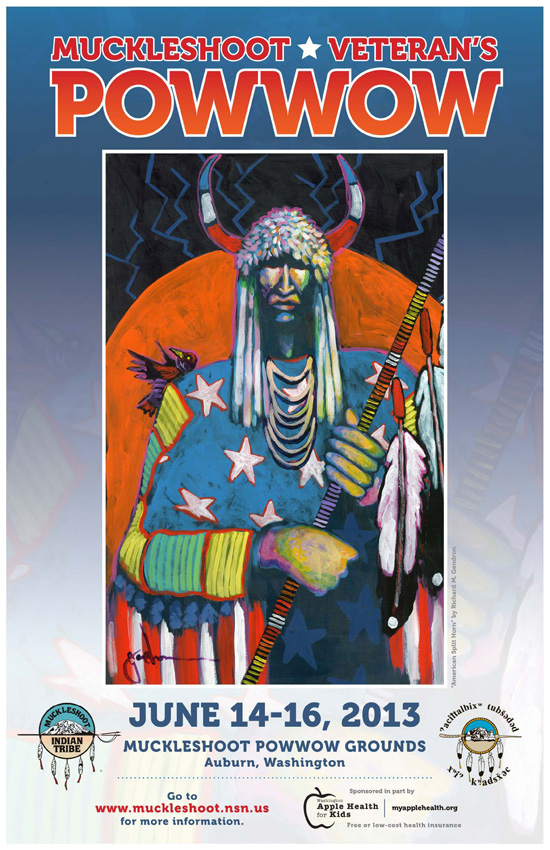Category: Arts & Entertainment
Marysville celebrates Strawberry Festival
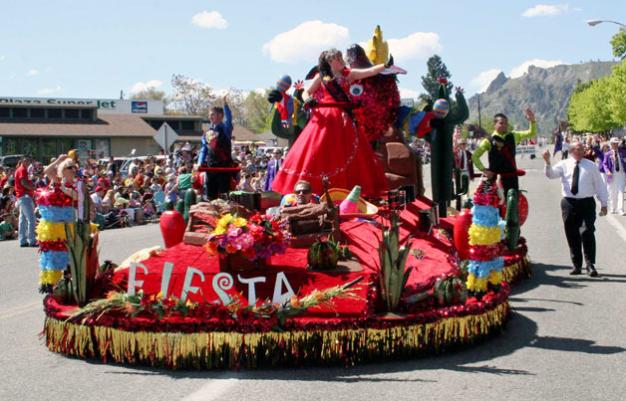
The Marysville Strawberry Festival Royalty and float appeared in the Wenatchee Apple Blossom Festival in May.
Kirk Boxleitner, Marysville Globe
MARYSVILLE — Before the Marysville Strawberry Festival’s Royalty and float put in appearances at the Saturday night Grand Parade on June 15, they’ll have already put in at least two months of travel time throughout the state of Washington, as well as a trip up north to Canada.
Darren Doty, co-vice president elect of the Maryfest Board of Directors, also serves as one of the parade float’s two main drivers, along with a supplementary third driver, and he estimated that the float crew will have logged approximately 1,000 miles on the road prior to cruising down State Avenue for the Strawberry Festival Grand Parade.
“We started on April 13 with the Daffodil Festival Parade,” Doty said. “What was unique about that day was that we had to participate in four different parades in one day — in Tacoma, Puyallup, Sumner and Orting — so rather than transporting our float in the trailer, like we do even when we do the West Seattle and Olympia parades on the same day in July, we were escorted as we drove the float down the highway between towns.”
Tacoma is actually the nearest of the festivals that the Royalty and float crew have attended so far this year, with locations such as Sequim, Wenatchee and New Westminster in Canada representing some of the furthest distances they’ve gone afield.
“Of course, we’ll be hitting Arlington and Tulalip later on,” said Doty, who’s learned to negotiate the challenges of navigating a large truck and trailer, and an even larger float once it’s unloaded and assembled, through some towns with some relatively narrow streets. “Even when I find a parking spot for the truck, I have to make sure I’ve got at least 50 feet behind me to get the float out, and even when I’m driving the float down the street for parades, I could still be sharing the road with other moving or parked cars.”
Without a speedometer, or any feasible side- or rear-view mirrors, Doty relies on spotters who walk alongside the float to guide his path, especially when his clearance on either side of the float has been as little as a few inches. An equally taxing aspect of participating in months of parades, that both Doty and Maryfest Board member Carol Kapua deal with, is the amount of prep time required for each of the Saturdays’ festivals.
“Let’s say a parade starts at the typical time of 11 a.m.,” Doty said. “That means we need to get ready at 4:30 a.m. to leave around 6 a.m., so that we can get to our destination in time for the judging between 8:30-9 a.m. From there, it’s a couple of hours of waiting around. We joke that our schedule is ‘Hurry up and wait,’” he laughed. “Even if the parade starts at 11 a.m., though, that still means we probably won’t start until 11:30 a.m., or possibly even noon if we’re slated to go later in the parade. And yet, it’s always fun.”
The Strawberry Festival Royalty take the time prior to the parades to meet with the Royalty from the organizations hosting them as part of those festivals. Depending on how far away they are from Marysville, they could be accompanied by a skeleton crew of a chaperone, a float driver and a couple of crew members to unpack and repack the float at the more distant festivities, or as many as a couple of dozen folks for parades as near as West Seattle, where the Strawberry Festival crew prepares barbecue meals for their cohorts.
“We keep traveling until the first week in October, when we hit Issaquah,” Kapua said. “Of course, our last parade of the year is Merrysville for the Holidays, after which we’ll tear down this year’s float, but by that point, we’ll already have paperwork started for next year’s Strawberry Festival. It really is a year-round process.”
In spite of her own demanding collateral duty of making sure that everyone has meals packed for parade days to suit their dietary requirements, Kapua still expresses enthusiasm for taking part in nearly a full year of festivities.
“For me, it’s being able to look at the little kids’ faces, as they point to the float and dance along with the music,” Kapua said. “They don’t have any inhibitions in how they react.”
Although the Strawberry Festival’s Talent Show already took place on Tuesday, June 11, its Talent Show kicks off at 6:30 p.m. in the Marysville-Pilchuck High School auditorium on Thursday, June 13. Saturday, June 15, sees the Berry Run at Smokey Point Plant Farm at 8:30 a.m., the Rose-Planting Ceremony at Totem Middle School at 10 a.m., the Kiddies Parade on State Avenue at 6 p.m., the Grand Parade on State Avenue at 7:45 p.m. and the fireworks show at Public Works at 10 p.m.
For a complete listing of activities, go to www.maryfest.org.
Muckleshoot Veterans Powwow, June 14-16
Navajo ‘Star Wars’ Cast, Set for July 3 Premiere
Indian Country Today Media Network
Casting for the Navajo-language version of Star Wars has completed, and Navajo Nation Museum director Manuelito Wheeler is confident in the selections. “All the people that were cast fit the voice perfectly and they gave awesome performances,” he said, according to the Navajo Times.
Several of those cast offered personal thoughts on the characters they are voicing. The actor chosen to play Obi-Wan Kenobi compared the old Jedi master to a Navajo medicine man, while the actress who’ll play Princess Leia said she felt that her own personality mirrored that of Carrie Fisher’s character. The actor chosen for Darth Vader is a coach at Rock Point High, and said that he identified with Vader’s leadership skills. The role of Han Solo — Star Wars‘ cocky “scoundrel” — went to James Junes of the comedy duo James and Ernie.
Radmilla Cody, former Miss Navajo Nation and a 2013 Grammy Nominee, auditioned — alas, unsuccessfully — for the part of Princess Leia. “It was quite the experience in the sense that it was fun, nerve wrecking, and exciting all at once!” she tells ICTMN. “At one point during the audition, I was reminded of the Miss Navajo pageant panel questions. I am excited for everyone involved especially Shi yazh Herman Cody who did the voice-over for Uncle Owen.”
Organizers are keeping the identity of the actor who’ll voice bronze protocol robot C-3PO a secret. According to AZCentral.com, some 115 Navajos attended the casting, which took place May 3 and 4. In all, 20 actors were chosen to lend their voices to the production, says Dan Bloom of TheWrap.com.
In a recent interview with NPR, Wheeler revealed some of the plans for the premiere. “The premiere sponsor that came forward was Navajo Nation Parks and Recreation,” Wheeler said. “They do that Navajo Nation Fair and the Fourth of July fair. So, I will premiere it at the Fourth of July celebration on July 3. We have a grandstand there on the fairgrounds and we are having a screen built on a semi-flatbed trailer. So, when we’re ready we’ll drive that out and set up chairs … and have popcorn for as many as we can make popcorn for.”
The following Navajo-speakers have been chosen:
Luke Skywalker: Terry Teller (Lukachukai, Arizona)
Princess Leia: Clarissa Yazzie (Layton, Utah)
Darth Vader: Marvin Yellowhair (Rough Rock, Arizona)
Han Solo: James Junes (Farmington, New Mexico)
Grand Moff Tarkin: James Bilagody (Tuba City, Arizona)
Obi-Wan Kenobi: Anderson Kee (Cottonwood, Arizona)
Aunt Beru: Elsa Johnson (Scottsdale, Arizona)
Uncle Owen: Herman Cody (Ganado, Arizona)
C-3PO: To Be Announced
Read more at http://indiancountrytodaymedianetwork.com/2013/06/12/navajo-star-wars-cast-set-july-3-premiere-149855
Native Artist Tony Abeyta Talks Inspiration and Aspirations
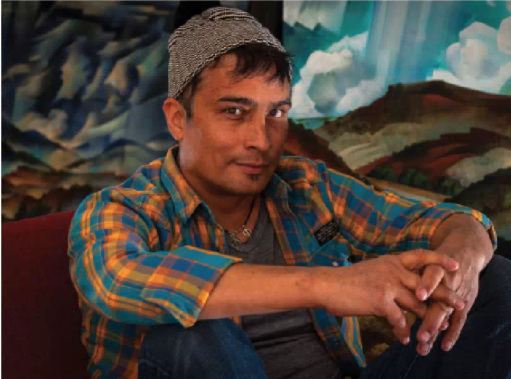 Heather Steinberger, Indian Country Today Media Network
Heather Steinberger, Indian Country Today Media Network
The modest studio, a second-story flat just off the plaza in Santa Fe, New Mexico, was a riot of color, images and media. Paintings and assemblages on paper perched in helter-skelter rows against the walls, a multipanel wooden piece rested in the middle of the floor, and easels stood in streaming shafts of morning light.
The artist responsible for all this scarcely stood still. Clad in a knit cap, plaid shirt and worn jeans, he looked like a young 20-something, still flush with the excitement of artistic experimentation and living a creative life. In actuality, Tony Abeyta is 47 and one of the most highly regarded contemporary painters working today. Last year, he earned the New Mexico Governor’s Award for Excellence in the Arts and was named a Living Treasure by Santa Fe’s Museum of Indian Arts & Culture. One of his murals adorns its gathering space, and a specially commissioned Abeyta painting was the signature image for the National Museum of the American Indian’s grand opening in Washington, D.C.
Abeyta has come a long way from his childhood in Gallup, New Mexico, where he grew up among Navajo, Zuni, Acoma and Laguna peoples. Yet even as a child, he says he was interested in creating—and in collaborating with others. “I was always making, creating, building. I also was into teamwork, manifesting new ideas with the other Navajo kids. We really did a lot of very creative art projects. Not painting, because we didn’t have any art supplies. It was more like salvage. My favorite show was Fat Albert [and the Cosby Kids] , and they always went to the dump!”

Abeyta also had ample inspiration at home. His father was a painter, and his mother worked with ceramics, so he was always surrounded by art. Although he doubted that he could build a career as an artist, he decided to take art classes in high school. “I had such curiosity,” he recalls. “I wanted to travel, to look at art. In the school library, I learned about the Flemish painters, the French Impressionists, the magic of people creating art.”
His sister was a student at the Institute of American Indian Arts in Santa Fe, and at the age of 16, Abeyta joined her there. He says he was blown away by the academic world: “There were supplies, easels, lights, fellow creative people. I was surrounded by artists from other nations. We were all in the studio, sharing ideas. School was all about community.”
Much of the student discussion then focused on the proper direction of American Indian art—Abeyta says politics and social responsibilities were deeply entrenched in Native art in the 1960s and 1970s. Then, in the 1980s, he says, the genre of Indian art really blossomed. “It was like wildfire. It became fashionable. Then it met its demise due to banality; it used the same images, the same stereotypes. A few artists, though, were interesting. There was the duality of traditionalism and contemporary vision. So, what was the next movement?”
Abeyta took classes at the institute for a year, but he soon realized that he needed to venture further afield. He says he felt an almost magnetic draw to immerse himself in something more mainstream than what he was doing in Santa Fe—to go beyond Indian art. “There were limitations on being Native and staying in New Mexico,” he explains. “I wanted to go to school back East. [The Maryland Institute College of Art in] Baltimore gave me a scholarship so I could attend tuition-free.”
Abeyta traveled to Baltimore and beyond. He studied at the Art Institute of Chicago and at the Haystack Mountain School of Crafts in Deer Isle, Maine. He also traveled overseas to study in southern France and in Florence, Italy. “It was an artistic Kerouac road trip!” he says, laughing. “I had no money. I’m amazed that I got through school—great schools—and traveled Europe.”
These travels and art-school experiences were critical for the young artist. “Artists just want to jump in and sell,” he explains. “They don’t want to learn the traditions [or] do the work. I saw such immense possibilities in how artists create. I was coming from a community where art follows traditional colors, images, themes, values. This was an opportunity to find and have a unique voice, one not limited by expectations. I wanted the artistic license to do whatever I wanted to do.
“The problem with Indian art is that people focus only on the Native experience, not on the universal human one,” he adds. “It’s too focused on tribal affiliation rather than on greater or similar cultural values throughout the world. And that’s what makes the world not lonely. Instead of always looking for differences, we should look at the similarities. We’d wake up amazed.”
Abeyta earned his master’s degree in fine art from New York University. Today, he splits his time between Santa Fe, where he is represented by the Blue Rain Gallery, and Chicago, where his son, Gabriel, 22, lives and works as a filmmaker. (His daughter, who is 15, hopes to be an installation artist.) He maintains a studio in both places.
After more than three decades as an artist, he continues to experiment with his media—including oils, charcoal, sand and even jewelry—as well as with his techniques, images, patterns, colors and style. Now in what he calls the middle range of his career, Abeyta says he’s even more careful about refining his work and making sure that it doesn’t become predictable: “[Art] is about making a contribution to culture, about being part of the creative dialogue. Without that, you run the risk of banality. I don’t shortchange the art; I don’t whip things out. I did when I was younger. Now, I might work on a painting for a year—because now, everything is part of my legacy.”
While he remains passionate about his life as an artist, he’s equally passionate about supporting the native arts community and younger artists who are just embarking on their careers. Not only has he donated work to local and national charities and served on the Museum of Indian Arts & Culture development committee, he is an adjunct professor at Institute of American Indian Arts. “I do the fall semester, then take off in the spring. I start with the basics: drawing. That’s the foundation for everything, from painting and sculpture to fashion and architecture.”
When asked about his motivation for teaching, Abeyta pauses, then says he hopes the younger generation can benefit from his experience: “I tell them, back up, don’t run. Develop the artwork before you show it. I know this from experience. I started showing and selling my work at 20; that’s when I quit my job. But selling paintings is a futile spiritual endeavor. You go down that road, and you find yourself saying, ‘I’ve paid the rent, I’ve paid for my car. Why am I so unhappy?’
“So I teach. I’m not interested in the commercial part. I provide direction on content, techniques, and I guide them to slow down. People respond to the work if you’re passionate about it, so you have the responsibility to do the best work you can. Be original.”

Abeyta remains busy with large neomodernist landscapes; black-and-white, abstract, biomechanical, charcoal-and-ink wash drawings that he mounts on Japanese paper; and multipanel wooden pieces that depict ancestral, spiritual figures. “I love working with wood. Color is really important. I’ve kept informing it, creating something sculptural. These paintings really do transform into walls sculptures.”
When he does pause to reflect on a career that is admittedly quite accomplished, Abeyta says a couple of highlights come to mind. One is the 2004 opening of the Smithsonian’s National Museum of the American Indian. “They [commissioned] a big multipanel piece and blew it up into huge banners,” he recalls. “There were 100,000 people, and these banners on the National Mall; the work also was on press passes, VIP passes, posters, T-shirts. All pieces of my painting. It was surreal.” The painting now resides in the Smithsonian. Other museum collections containing Abeyta’s work include the Heard Museum of Art, Millicent Rogers Museum, Museum of Indian Arts & Culture and Wheelwright Museum of the American Indian.
The second highlight was a recent e-mail from the president of the Institute of American Indian Arts. “I’m getting an honorary doctorate for all of my contributions,” Abeyta marvels. “That’s a really big deal!” Laughing, he adds, “I should be a waiter.”
Abeyta is grateful for the journey that has taken him to so many places around the world and connected him with intriguing people from all walks of life. “Art has been the vehicle,” he says. “It’s not me, though. I’m not part of it. People respond to the work. I just do it to the best of my ability.”
He doesn’t dwell on accolades or his accomplishments, however. His eyes are firmly planted on the work. “I love what I’m doing now. I’m still excited to come into the studio, so the here-and-now is pretty good. [But] I’d like to move toward more figurative subjects. So, the next decade is about refining what I do. I’d like to move somewhere—to look with a different eye.”
His artistic journey, he explains, remains one of discovery. “At the end of it all is the spiritual. Artists can have the skill, the movements, the rhythm. But the spiritual part of it is the meat-and-potatoes of why we’re here.”
Read more at https://indiancountrytodaymedianetwork.com/2013/06/11/native-artist-tony-abeyta-talks-inspiration-and-aspirations-149830
Seeking Cooks and Cook Helpers for Salmon Ceremony Event
The Tulalip Tribes Salmon Ceremony Event
June 15, 2013
Job Title(s): Cooks and Cook Helpers
Note: The Tulalip Tribes publicly announces that Indian Preference to hiring shall apply to the Tulalip Tribal job opportunities.
Requirements:
- Have a valid state driver’s license, reliable vehicle and auto insurance. (PREFERRED)
- Food Handlers Permit. (PREFERRED)
- Must pass initial criminal history background check.
- Dependable and willing to work.
- Must be able to work non-traditional hours which may vary due to participation.
- Able to work independently, follow direction and work well with others.
- Must be at least 16 years of age.
Physical Characteristics and/or Prerequisites:
- Stamina to sit, stand and/or walk for prolonged periods of time.
- Mobility to bend, stoop, and/ or climb stairs.
- Ability to lift/push/pull heavy objects.
Tribal Department: Community Services
Job Summary: To prepare and help serve food for the traditional dinner provided to The Tulalip Tribes Community and Public. Provide support to The Tulalip Tribes annual Salmon Ceremony which offers Tulalip Tribal Members with a forum to participate in their origins, beliefs, values and lifeways. Provide support to the traditional ceremony and dinner held to honor the first salmon caught of the season.
Employee Reports To: Head Cook
Responsibilities:
-
Assist cook in preparing and serving meals for up to 200 guests.
- Ensure safe and sanitary conditions at the site.
- Clean up after meals and as assigned.
- Wash and sanitize dishes, equipment and all surfaces regularly.
- Assist with food orders and shopping if needed.
- Assist with putting away delivered food and items as needed.
Disclaimer: The information provided in this description has been designed to indicate the general nature and level of work performed by incumbents within this job. It is not designed to be interpreted as a comprehensive inventory of all duties, responsibilities, qualifications and working conditions required of employees assigned to this job. Management has sole discretion to add or modify duties of the job and to designate other functions as essential at any time. This job description is not an employment agreement or contract
Terms of Employment: This is a stipend position that can be up to but no longer than two days (48 hours) of services rendered
Pay Rate: STIPEND
Opening Date: June 7, 2013
Closing Date: June 12, 2013 at 4:00 pm
For more information or questions; please call Sasha Smith at Central Employment # 360-716-4284
Car Shine in downtown Arlington
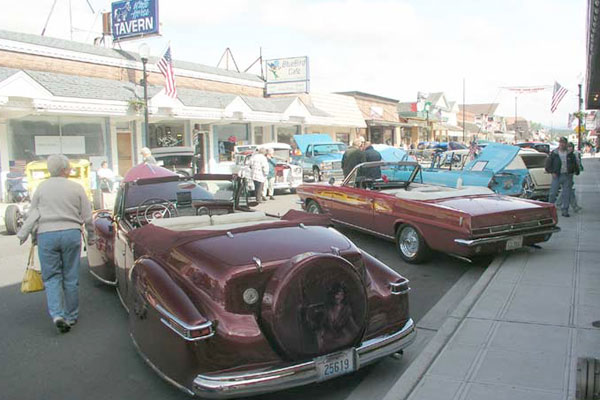 By Beckye Randall, North County Outlook
By Beckye Randall, North County Outlook
Olympic Avenue in downtown Arlington will be an auto enthusiast’s dream on Saturday, June 8, as the Downtown Arlington Business Association (DABA) presents the 14th annual Show & Shine Car Show.
Drivers of antiques, classics, hotrods and muscle cars are invited to register Saturday morning at 8 a.m., in the 300 block of N. Olympic Avenue, to display their prized possessions and enter to win best of show and other awards. The registration fee is $20.
Pre-registration is also available by contacting organizer Marilyn Bullock, DABA president, at (360) 435-4963 or online at www.arlingtonwa.org.
The first 275 cars registered receive dash plaques, and an awards ceremony is planned for 3 p.m. A raffle will also be held during the event.
The Show & Shine Car Show is one of DABA’s major fundraisers, with proceeds from the car show helping support downtown projects and activities, along with a donation to the Arlington Food Bank.
DABA meets on the second Wednesday of the month at 8 a.m. at the Wild Rose, 318 N. Olympic Ave. Business owners and interested individuals are welcome to attend.
Photo courtesy of Chuck Goolsbee.
Teens making films ‘on the fly’ out in Indian Country
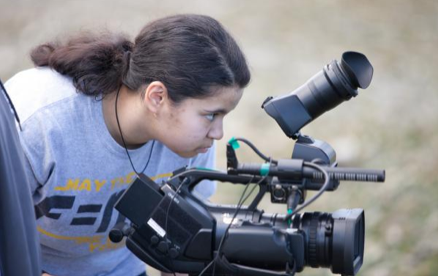
Raven Two Feathers of Seattle directs a short documentary about the Suquamish Indian tribe as part of the 2013 SuperFly Filmmaking Workshop.
KPLU 88.5 June 7, 2013
Each year, 50 teens from all over the country fly into Seattle to participate in a fast-and-furious film challenge. They have to produce short films in 36 hours, or “on the fly.” Which is why the program is called “SuperFly.”
Most of the participants are Native Americans, creating Native-themed films out on location on an Indian reservation.
Seattle filmmaker Tracy Rector and her Longhouse Media company launched the workshop 8 years ago.
“Growing up in Seattle as a mixed race woman who’s indigenous, I was very aware that there were not representations of people like me. And I often felt very isolated,” she said.
The all-expenses paid workshop, held in partnership with the Seattle International Film Festival, brings together a multi-cultural group of youths. And in an effort to demystify Indian Country, the workshops are held on a different Indian reservation each year.
This year, the Suquamish Tribe out on the Kitsap Peninsula hosted the teens and introduced them to their history and culture through songs, dances, teachings, and a feast of traditional foods. They also inspired the subjects for five short documentaries and one animated film. In previous years, the teens have worked off of original narrative scripts authored by a Native writer.
On the beach on a recent day, Raven Two Feathers and Evodie Ngoy helmed the camera to tell the story of Suquamish tribal member Peg Deam.
Deam stirred up controversy a few years ago when she took a canoe from the Suquamish museum and paddled it out on the water. She says it was her way of reclaiming and revitalizing her culture.
Raven, 16, is Cherokee, Seneca, Cayuga, Comanche, and a New Mexico transplant who now attends Ballard High. She said the workshop taught her more about the diversity of tribes in the Pacific Northwest.
She added she could relate to the subject of her documentary: “I feel like you need to take risks cause originally I was super shy as a kid and I had this one teacher that pushed me to get out of my comfort zone.”
When she stood out on the beach, directing, Raven was anything but shy. She shared directing duties with Evodie, a 15-year-old from Baltimore originally from the Democratic Republic of the Congo.
“It feels awesome. I don’t know how else to express it. I’m mean, too pumped. Too pumped. Too much joy,” she said about the filmmaking experience.
The teens are divided into teams. They work with professional mentors and professional equipment. They’re fueled by the adrenaline of an intense deadline and the passion of what they’ve already figured out they love to do.
“I heard a great thing from a director once that you don’t say, ‘I want to become a filmmaker.’ You say, ‘I am a filmmaker!’ So I guess you could say I am a filmmaker!” said Raven.
“You are! Did you see what you did today?” said Evodie to Raven.
The SuperFly films, which get screened as part of the Seattle International Film Festival, will also get submitted to other festivals. They’ll also wind up in the collection of the Smithsonian’s National Museum of the American Indian in Washington, D.C.
Soap Lake Powwow, June 7-9
Native teen tale The Lesser Blessed
Richard Van Camp’s coming-of-age novel adapted for the screen
CBC News Posted: Jun 4, 2013 12:27 PM ETA film adaptation of Richard Van Camp’s Northern-set debut novel The Lesser Blessed, a coming-of-age tale about a First Nations teen, is hitting theatres across the country.
Shot in Sudbury, Ont. (standing in for the book’s Northwest Territories setting), the drama opens in Montreal, Winnipeg, Edmonton and Ottawa on Friday. It opened in Toronto last weekend.
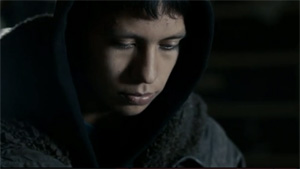 Russian-born Canadian filmmaker Anita Doron directed the film, with young newcomer Joel Evans starring as the teen outsider protagonist. He becomes involved in an unlikely triangle when he becomes smitten with the prettiest girl at school and also befriends a cool new student.
Russian-born Canadian filmmaker Anita Doron directed the film, with young newcomer Joel Evans starring as the teen outsider protagonist. He becomes involved in an unlikely triangle when he becomes smitten with the prettiest girl at school and also befriends a cool new student.
“The story is as familiar as Rebel Without a Cause or even West Side Story — this idea growing up and having issues with other factions or other cliques inside your high school and this journey of self-exploration,” said American actor Benjamin Bratt, who appears in The Lesser Blessed in the role of Jed.
While attending the Toronto International Film Festival last September, Bratt — best known for his turn on TV’s Law and Order — talked to CBC News about why he agreed to take part in a small Canadian indie film.
Bratt, the son of a Peruvian-born Quechua Indian, said he felt it was important to take the role of a native person who shatters stereotypes by teaching a volatile teen about balance. The actor is interested in the social problems among First Nations people and lauds Doron for creating a film that shows a young native person up against the same dilemmas that all teens face.





